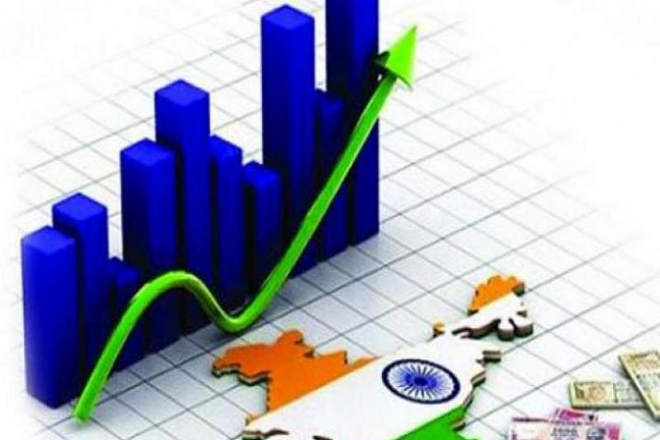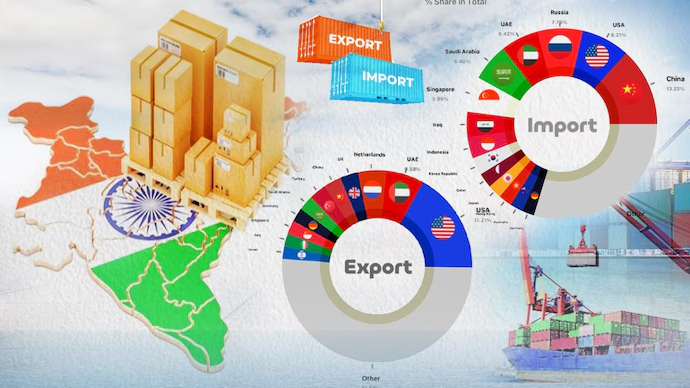India stands at a pivotal juncture in its journey from a developing nation to a potential global economic powerhouse. As of 2025, the country has made significant strides in various sectors, yet faces enduring challenges that require concerted efforts to overcome in developing india
Economic Growth and Rural Resurgence.
India’s economy demonstrated resilience with a 7.4% GDP growth in the January-March 2025 quarter, surpassing expectations. This growth was primarily driven by a resurgence in rural consumption, attributed to factors such as above-average monsoon rains, increased farm incomes, and easing inflation. Rural wage growth reached a four-year high, and indicators like rising tractor and two-wheeler sales reflected this rural rebound .

Infrastructure Development and Investment Initiatives..
Infrastructure development remains a cornerstone of India’s economic strategy. The “PM Gati Shakti” initiative, a $1.2 trillion project, aims to provide multimodal connectivity across the country, enhancing logistics and manufacturing competitiveness . Additionally, state-level initiatives like Uttar Pradesh’s “Udyami Mitras” have streamlined investment processes, attracting significant industrial projects and contributing to the state’s goal of achieving a $1 trillion economy .
Skill Development and Employment Challenges..
Despite economic growth, India faces challenges in job creation. The country needs to generate approximately 115 million jobs by 2030 to accommodate its expanding workforce . Initiatives like “Skill India” aim to train over 30 crore individuals in various skills, but the quality of education and vocational training systems has not kept pace with the developing needs of the job market, leading to a mismatch between demand and supply of skilled labor .
Income Inequality and Social Disparities..
Income inequality remains a pressing concern. In 2019, the top 10% of income earners accounted for 56% of national income, up from 37% in 1980 . This disparity is more pronounced in rural areas, where access to quality education, healthcare, and employment opportunities is limited. Addressing these disparities is crucial for ensuring inclusive growth and social stability.
Environmental Sustainability and Climate Resilience..
Rapid industrialization and urbanization have led to environmental degradation, including air and water pollution, deforestation, and biodiversity loss. These environmental impacts not only affect public health and quality of life but also undermine the sustainability of economic growth. The Reserve Bank of India estimates that up to 4.5% of GDP could be at risk by 2030 due to climate change impacts . Balancing economic growth with environmental sustainability is critical, requiring significant investments in green technologies and sustainable practices.
Digital Transformation and Technological Advancements..

India’s digital transformation is a key driver of its developiong future. The country has made significant progress in developing digital public infrastructure, with widespread adoption of digital payments, data-sharing infrastructures, and e-commerce growth. However, challenges remain in accelerating this transformation and mobilizing resources for infrastructure development . The government’s initiatives, such as “Digital India,” aim to enhance digital literacy and infrastructure, fostering innovation and entrepreneurship.
- GDP Growth: India’s economy expanded by 6.5% in the fiscal year 2024–25, surpassing earlier expectations and demonstrating resilience amidst global economic challenges .
- Sectoral Performance:
- Private Consumption: Increased by 7.3%, reflecting robust domestic demand.
- Private Investment: Grew by 6.4%, indicating sustained business confidence.
- Government Spending: Rose by 4.1%, supporting infrastructure and welfare initiatives.
- Agriculture: Output expanded by 3.8%, bolstered by favorable monsoon conditions .
🛢️ Energy Independence and Strategic Prospects
India is on the cusp of a significant oil discovery in the Andaman Sea, with estimated reserves of approximately 184,440 crore liters of crude oil. Union Minister Hardeep Singh Puri likened this potential find to the massive oil reserves of Guyana. If confirmed, this discovery could substantially reduce India’s reliance on imported energy and propel the nation’s economy toward a $20 trillion milestone .
📊 Global Economic Context
- World Bank Forecast: The global economic growth forecast for 2025 has been downgraded to 2.3%, primarily due to heightened trade tensions and increased trade barriers. In contrast, India’s economy is projected to grow at 6.3%, maintaining its position as the fastest-growing major economy .
- Reserve Bank of India (RBI) Policy: In a bid to stimulate growth, the RBI implemented its most significant interest rate cut in five years, aiming for an “aspirational” growth target of 7–8%. This policy shift underscores the government’s commitment to fostering economic expansion .
🔮 Long-Term Projections
- $5 Trillion Economy: India is on track to become a $5 trillion economy by 2027, supported by sustained GDP growth and strategic policy reforms in developing nation..
- Global Economic Standing: By 2031, India is projected to become the world’s second-largest economy, driven by factors such as demographic advantage, manufacturing growth, and increased exports .
Global Trade and Investment Dynamics…
India’s integration into the global economy presents both opportunities and challenges. The country has attracted foreign direct investment (FDI) across various sectors, including manufacturing, technology, and services. However, global economic uncertainties, including trade tensions and geopolitical issues, pose risks to India’s broader economic momentum . Moreover, India’s trade infrastructure, including ports and customs, requires further improvement to facilitate smoother and faster trade .

Conclusion…
India is classified as a developing country due to its high poverty rates, low per capita income, and significant inequality, despite its economic growth and global influence. While India’s economy is large and growing, its human developing indicators, particularly life expectancy and education, lag behind developed nations. However, India is making strides in various areas, including poverty reduction, urbanization, and technological advancements, suggesting a potential trajectory toward developing nation status in the coming decades.
for more info visit